In honor of the 50th anniversary of the Endangered Species Act, the Natural Resources Council of Maine is partnering with Maine photographer Nathaniel Child on a blog and photography series to highlight some of Maine’s threatened and endangered species and their habitat. This spring, the Recovering America’s Wildlife Act (RAWA) was just reintroduced in the Senate. Passing the Act would help protect 370 Maine species including Atlantic Puffins, moose, Arctic char, and Canada lynx, which are highlighted in this blog. Funding from RAWA will help state and wildlife agencies conserve priority habitat.
Fifty years ago in 1973, Congress passed the Endangered Species Act to protect imperiled species and help their populations recover. More than 1,300 species have been listed so far, and while many species are still declining, there have been some high-profile national success stories, such as the recovery and delisting of Bald Eagles and Peregrine Falcons. Maine passed its own Endangered Species Act in 1975 and has listed 51 species as threatened or endangered. Thanks to extensive recovery efforts, Maine has not lost a single species since that time and has played a vital role in the recovery efforts of species like Piping Plovers and Atlantic Puffins.
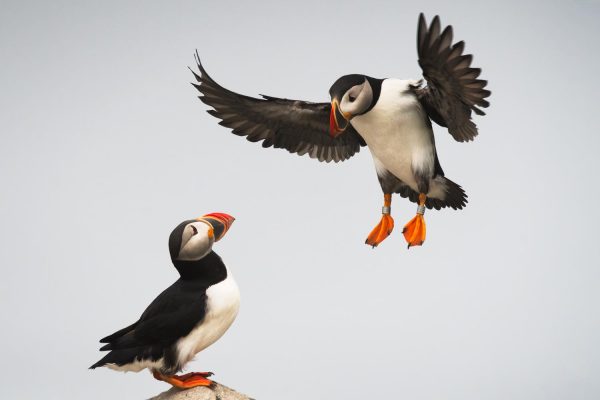
An Atlantic Puffin comes in for a landing on Machias Seal Island. [Credit: Nathaniel Child]
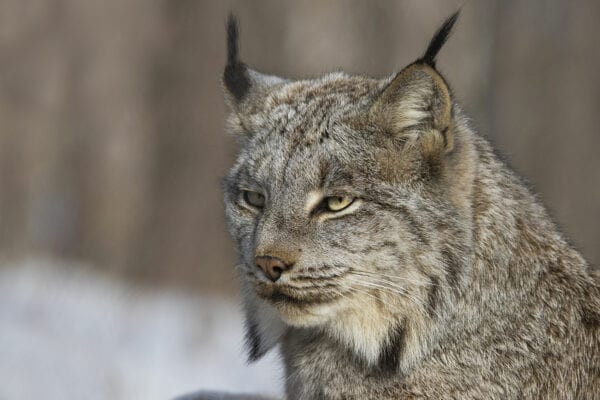
Canada lynx [Stock photo]
With the challenges of finding a Canada lynx in the front of my mind, I set out to the forests of western Maine with a pack full of camera gear in hopes of photographing this fascinating feline as part of this Endangered Species blog series. Even though I knew my chances were slim, I was comforted by the fact that even if I didn’t find a lynx, there’s always something interesting to be seen in Maine’s wild woodlands.
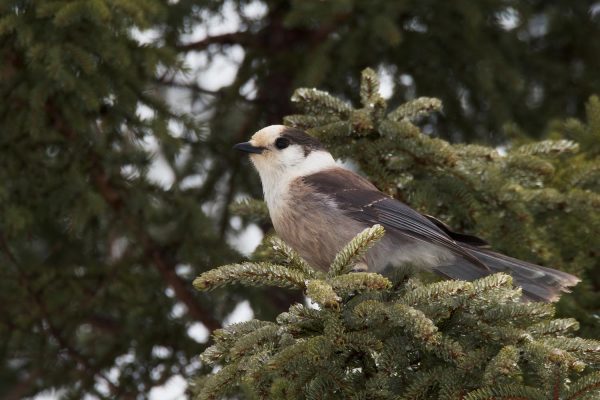
A curious Canada Jay checks me out before flying back into the trees. [Credit: Nathaniel Child]
Determined to make the most of the less-than-ideal conditions, I set out the next morning into a forest of ice-encased branches and sleet-covered snow. Almost immediately, I found a set of snowshoe hare tracks crossing the trail, which gave me hope for better things to come. Snowshoe hares make up the vast majority of a lynx’s diet, so if I was in an area with a lot of hares, the odds were good that it was a favorable area for lynx as well.
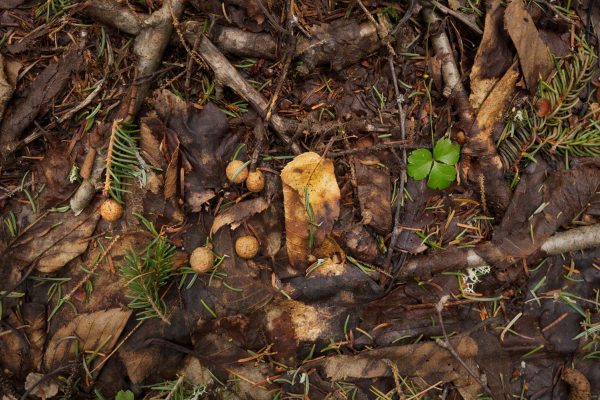
A handful of snowshoe hare pellets on the forest floor. [Credit: Nathaniel Child]
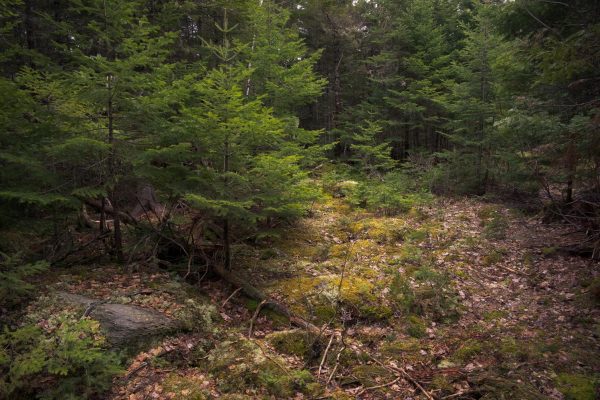
A view of the dense forest preferred by snowshoe hares. [Credit: Nathaniel Child]
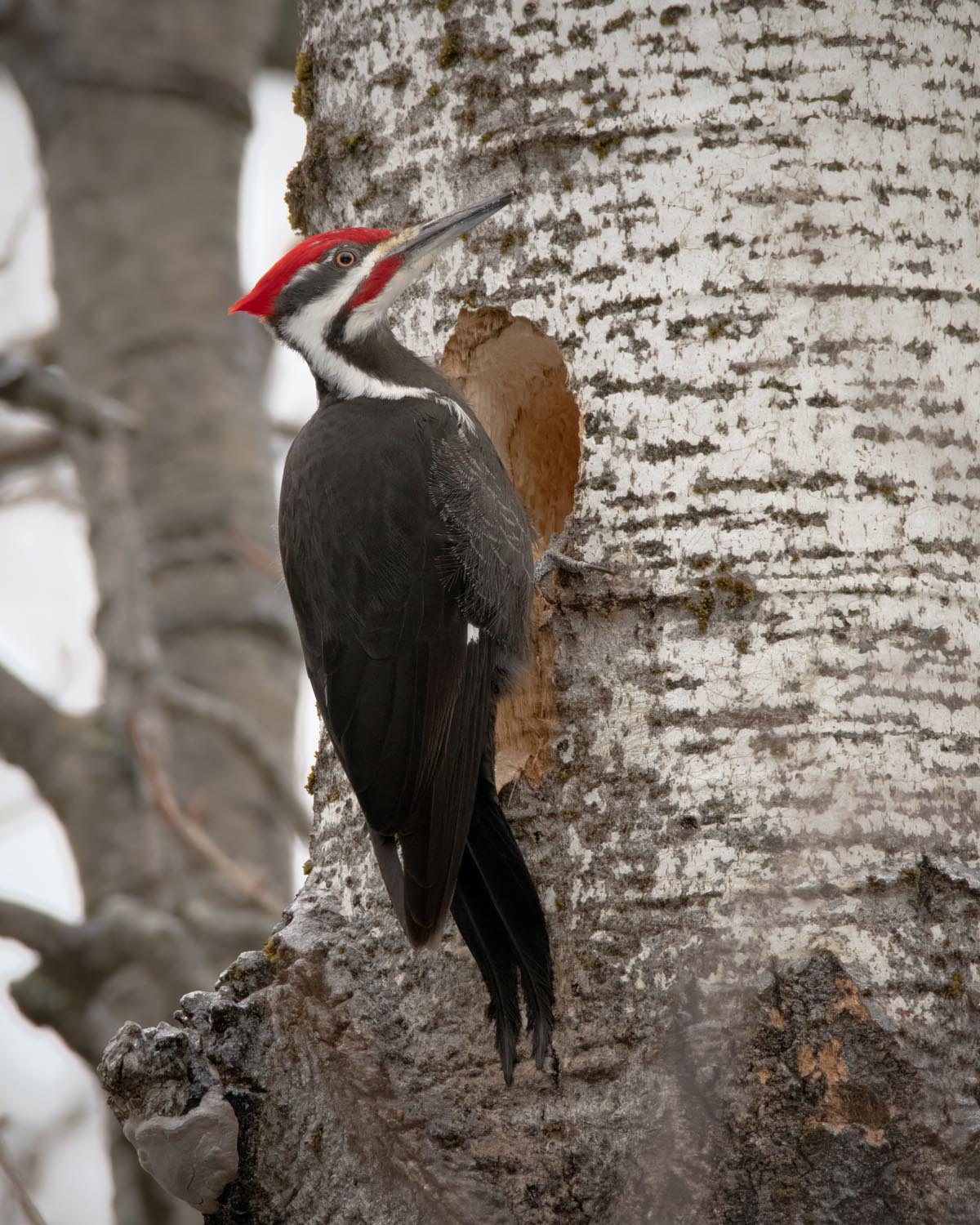
A Pileated Woodpecker pauses in the middle of excavating a cavity in the trunk of an aspen. [Credit: Nathaniel Child]
Trail cameras are an excellent way to search for hard-to-find wildlife like lynx, since they can be left in one place for weeks or even months at a time. The best results frequently come from placing cameras along an established game trail or at “choke points” in the landscape, where features like streams or steep hills funnel animals into a small area. Animals, like humans, prefer to take the easiest way through the forest, so game trails can be a good way to see many different kinds of animals.
I found a promising spot in a patch of good habitat near the edge of a stream. I was equipped with three cameras: a DSLR camera trap and two lower quality game cameras. After carefully choosing a composition for my DSLR, I set the game cameras up to cover more of the surrounding forest. After ensuring everything was working properly, I crossed my fingers and headed back to my car as the late afternoon sun filtered through the forest.
I returned to check my cameras three times over the course of a month. Each time, my anticipation built as I trekked through the increasingly snow-free woods, hoping this would be the time I would see a lynx as I reviewed the images on my camera. I saw snowshoe hare scat pellets, uncovered by the melting snow, scattered all around the underbrush. However, despite the game cameras capturing images containing the nose of a moose, a foraging deer, or a flying squirrel peeking around a tree trunk, my cameras remained sadly empty of lynx.
After my last check of the cameras, I took down the camera traps and loaded them into my pack. I had come away from this challenge empty handed, but I had learned a lot about lynx in the process. I’m hopeful that next winter I’ll be able to return and see the round paw prints of a lynx winding between the trees of a snowy forest. As I zipped up my pack I heard the soft tooting call of a Northern Saw-whet Owl in the tree above me and looked up to see the tiny owl the size of a soda can on a branch over my head. It stared down at me as if to remind me that there is indeed always something to see in the wild forests of Maine, even if it’s not what you’re expecting.
-Nathaniel Child
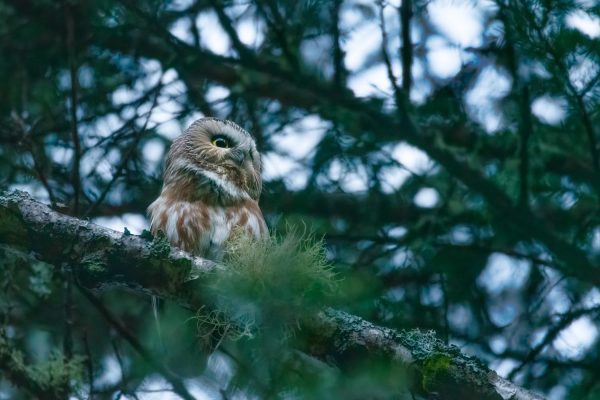
A Northern Saw-whet Owl hooting at dusk. [Credit: Nathaniel Child]
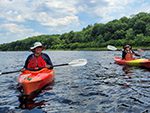

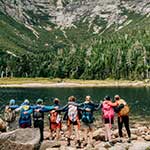
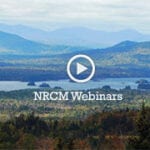



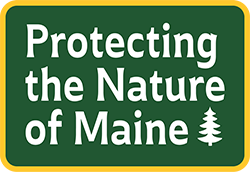



Leave a Reply